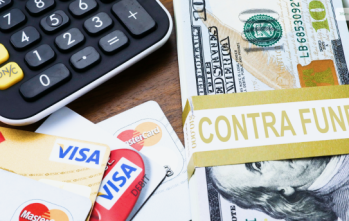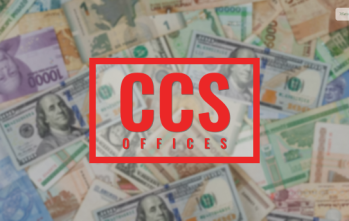Table Of Contents
Chargebacks Hitting Your Business Hard? Learn How To Prevent Them
Every business owner fears the moment they see the dreaded chargeback hit their account. In an instant, money is clawed back, and revenues are reduced. But chargebacks are more than a minor annoyance – they can seriously damage your business if left unaddressed.
Did you know chargebacks are one of the biggest threats to small business survival today? The rates are rising each year, and those who fall victim often do not last long due to the added financial strain. Yet most owners are unaware of how to prevent them properly.
In this article, you’ll discover the little-known secrets of chargeback prevention.
Understanding Chargebacks

When a credit card user requests that a charge that has been issued to their account be reversed, this is known as a chargeback. Refunds are issued directly by merchants, whereas chargebacks are handled by card issuers at the cardholder’s request.
A client may file a chargeback for various reasons. These reasons include non-delivery of the ordered goods or services, erroneous product descriptions, missing or damaged goods during shipment, repeated invoicing that was not canceled on time, or technological difficulties. A chargeback may also be the outcome of fraudulent charges.
While some issues, like lost or damaged shipping, maybe outside a retailer’s control, both online and physical retailers need to minimize other problems that lead to chargebacks. This helps protect their reputation with banks.
According to an article published in Business.com, excessive chargebacks can negatively impact a business. She notes that banks use chargeback numbers to assess merchant risk and reliability. Frequent chargebacks may then cause additional challenges for merchants down the road. Chargeback fees are automatically deducted from merchant accounts without question when disputes are initially filed.
Nydelis Ortiz, senior manager at the certification organization LegitScript, adds that merchants have a short window to collect information and submit a response disputing a chargeback claim.
The issuer then reviews both sides and determines liability for the transaction. If the merchant successfully disputes it, the cardholder, issuer, or payment processor may be liable depending on the dispute details and evidence provided. Unsuccessful disputes leave the merchant liable to refund the purchase amount.
Best Chargeback Prevention Strategies
1. Reducing Common Merchant Errors

Preventing errors and eliminating potential confusion for customers is one of the easiest ways for merchants to reduce chargebacks.
Many customers will not contact the merchant directly if there is a perceived or real error with a transaction. Instead, they will simply dispute the charge with their credit card issuer, triggering the chargeback process for the merchant.
Some frequent mistakes leave merchants vulnerable to chargebacks. A few common pitfalls include descriptor confusion, double billing, overcharging, and shipment mistakes.
According to Ethoca, descriptor confusion occurs when the name of the merchant is not recognizable on the customer’s bank statement. This can cause the customer to be unsure of what merchant they are being charged by.
Double billing is charging a customer twice for the same purchase. Overcharging happens when the merchant processes a transaction for an amount above or below the actual cost. Shipment mistakes result from sending a purchased item to the wrong delivery address of a customer.
While these are just a sampling of potential errors, it is in the best interest of merchants to identify ways to reduce all types of mistakes that can lead to chargebacks. Proactively preventing errors upfront is one of the simplest ways for merchants to avoid the costly burden of chargebacks.
2. Reducing First-Party Misuse Chargebacks
A significant challenge in chargeback prevention is eliminating disputes caused by 1st party fraud, also known as “friendly fraud.” While some of these types of disputes may be unintentional if a customer does not recognize a billing descriptor, there are deliberate instances where cardholders dispute valid charges to receive refunded goods or services for free.
Friendly fraud is difficult to prevent because the dispute occurs after the transaction is complete. The “fraud” is not evident until the buyer initiates a chargeback. This post-transaction timing makes it challenging to anticipate or stop using standard fraud prevention methods.
However, there are steps merchants can take to reduce friendly fraud chargebacks. Careful descriptor usage and prompt post-purchase communication can help customers recognize legitimate charges.
Additional verification measures for high-risk orders, like address or identity checks, may deter deliberately fraudulent disputes. While friendly fraud will likely never be fully eliminated, merchants should explore risk-based review options to improve chargeback outcomes from first-party misuse.
Using Descriptive Billing Information

One strategy to reduce confusion-based friendly fraud chargebacks is using clear and descriptive billing descriptions. Providing accurate details about the goods or services purchased helps the customer easily recognize and recall transactions.
The more specific the billing descriptor, the lower the risk of a dispute. For instance, “Business Name – Annual Software Subscription” provides clearer context than a vague descriptor like “Business Name – Purchase.”
Descriptions that specify the item, date of sale, or other relevant transaction details give customers a clear understanding of each charge when reviewing bank statements.
Precise billing information benefits both merchants and consumers. Customers find it simpler to monitor spending when charges are easily identifiable.
Clear descriptors make a mistaken dispute less likely to be filed due to confusion over an unfamiliar billing entry. This approach reduces chargeback volume for merchants and streamlines expense management for customers. Descriptive billing descriptions lower the risk of friendly fraud disputes based on misunderstandings.
FAQs
1. Why should you avoid chargebacks?
A: Chargeback Prevention: Discover Effective Strategies for 2024
Yes, chargebacks can significantly impact sellers. Financially, merchants often lose the order value and associated costs like shipping. Additionally, they’re required to refund the customer and pay a per-chargeback fee.
2. Can a chargeback be denied?
A: Absolutely. If the cardholder fails to present a compelling case to their bank or lacks a valid reason for initiating a chargeback, the bank may opt not to open a dispute. Merchants also have the opportunity to furnish evidence to counter a chargeback claim.
3. What constitutes a good chargeback rate?
A: Aiming for just one chargeback for every 100 transactions is considered ideal. Maintaining a rate of 1% or lower is generally sufficient to satisfy most card issuers and prevent retailers from incurring penalty fees or excessive charges per transaction.
While eliminating chargebacks may not be possible, businesses can significantly lower their risk through diligence and prevention. Staying alert to vulnerabilities and proactively managing the customer experience from start to finish protects revenues and reputations.
Most importantly, those who take chargeback avoidance seriously will gain a decisive advantage over complacent competitors. With the right strategies in place, even the toughest disputes can be transformed from liabilities to opportunities to strengthen loyalty in the long term. The smartest merchants use chargebacks not only to stay in the black but to see further in color.
Read Also:











Leave A Comment